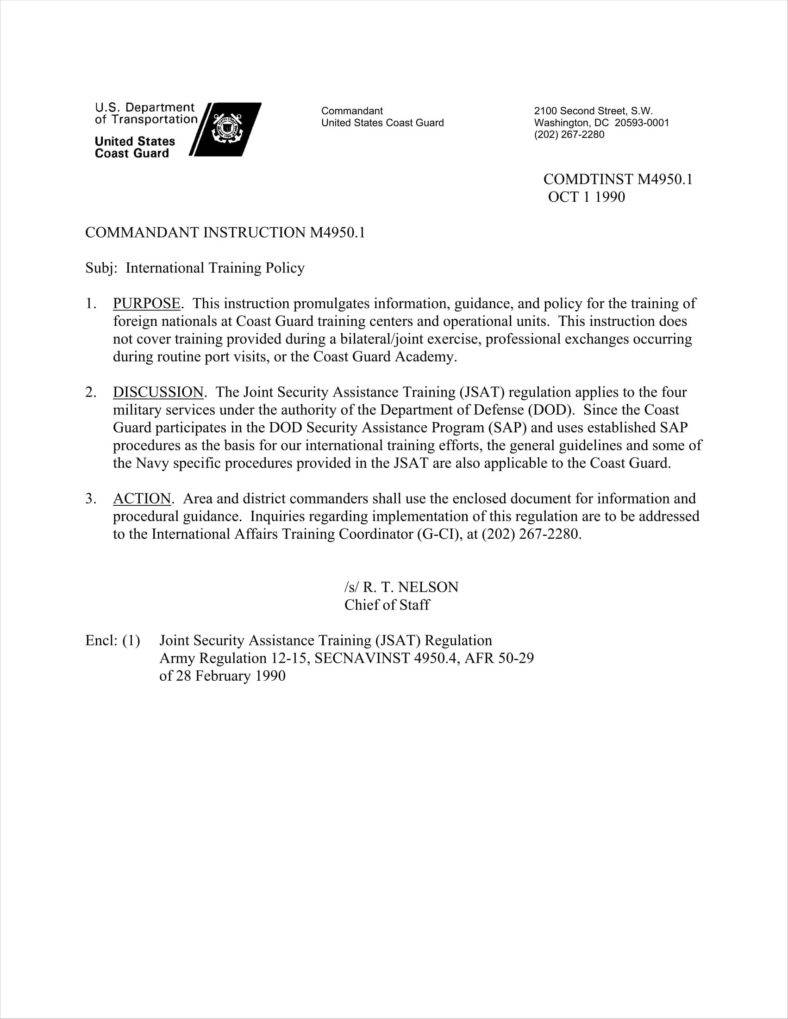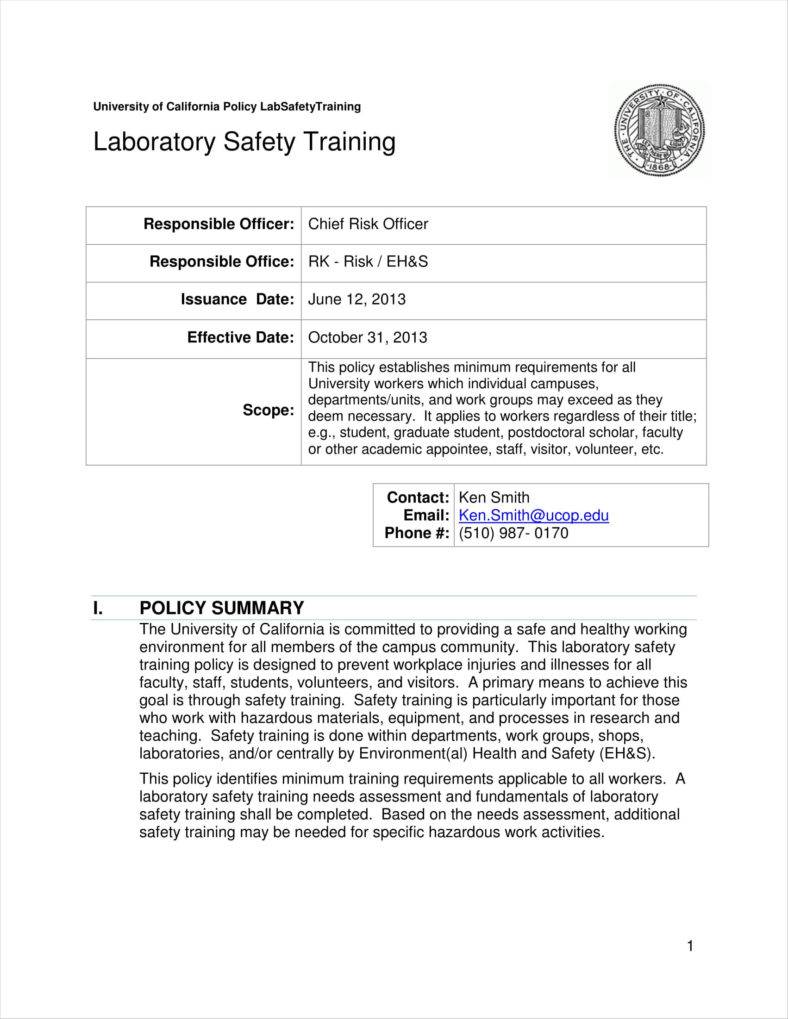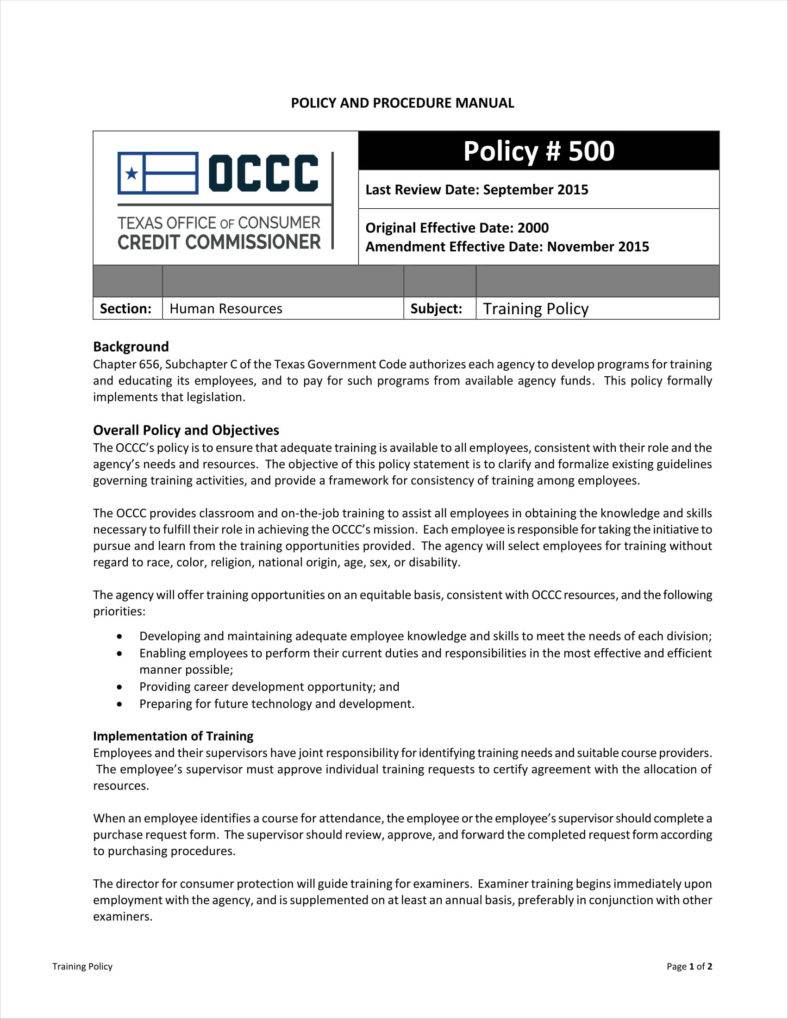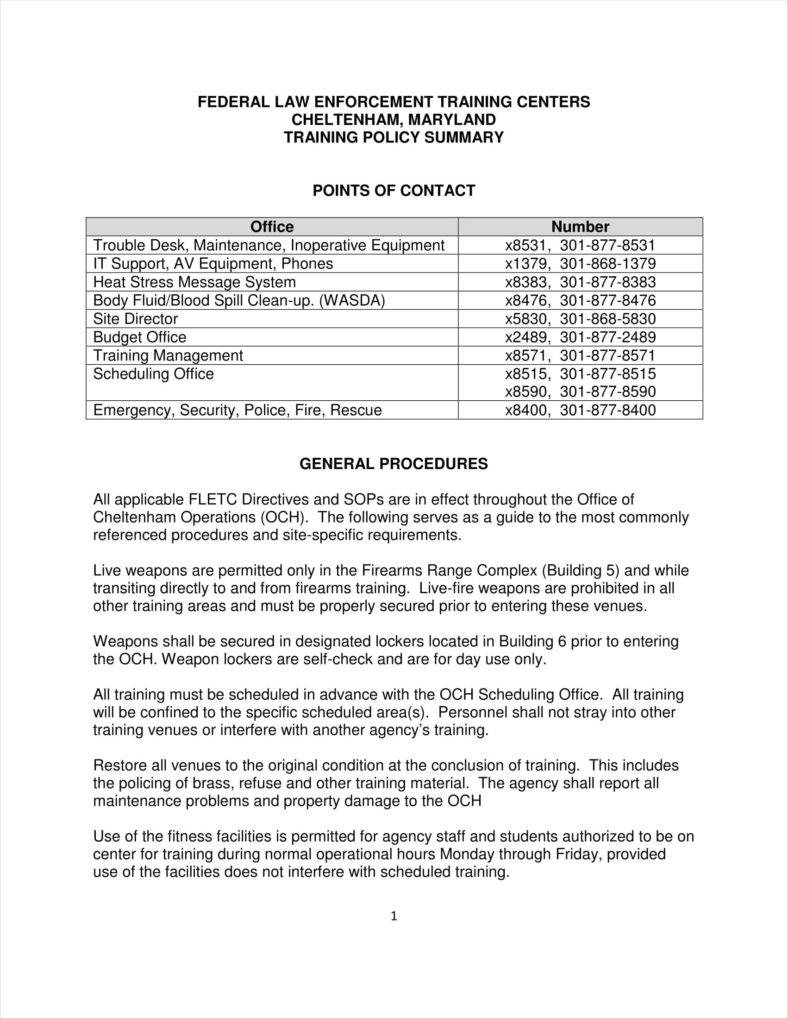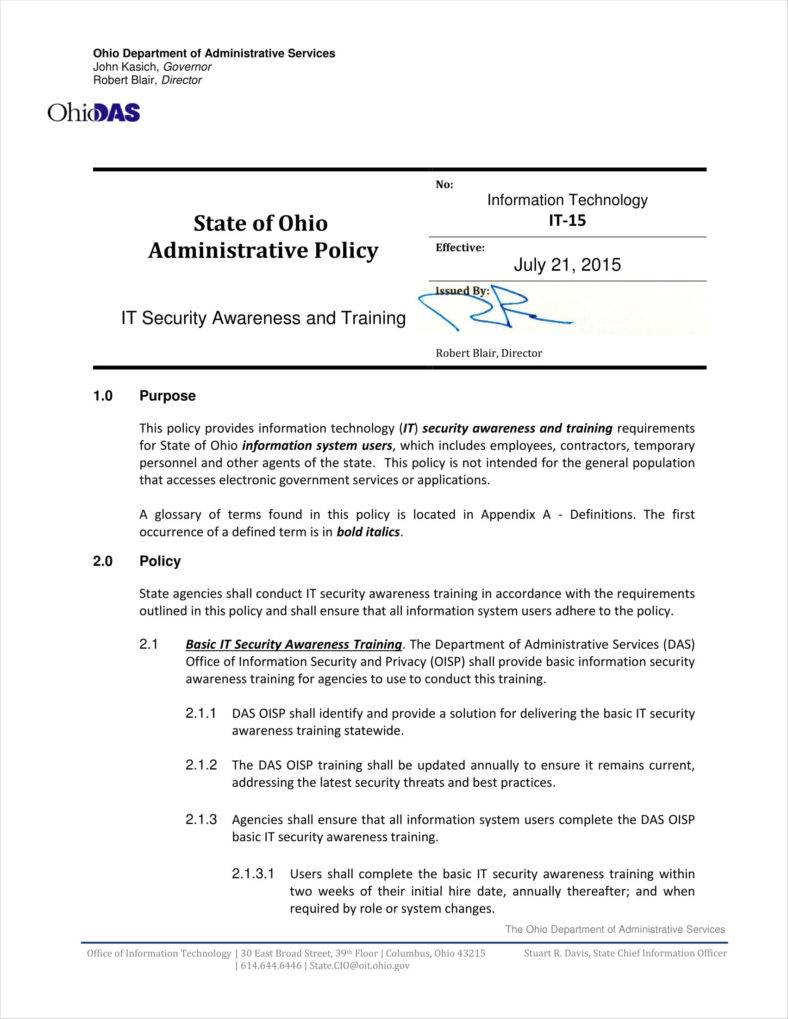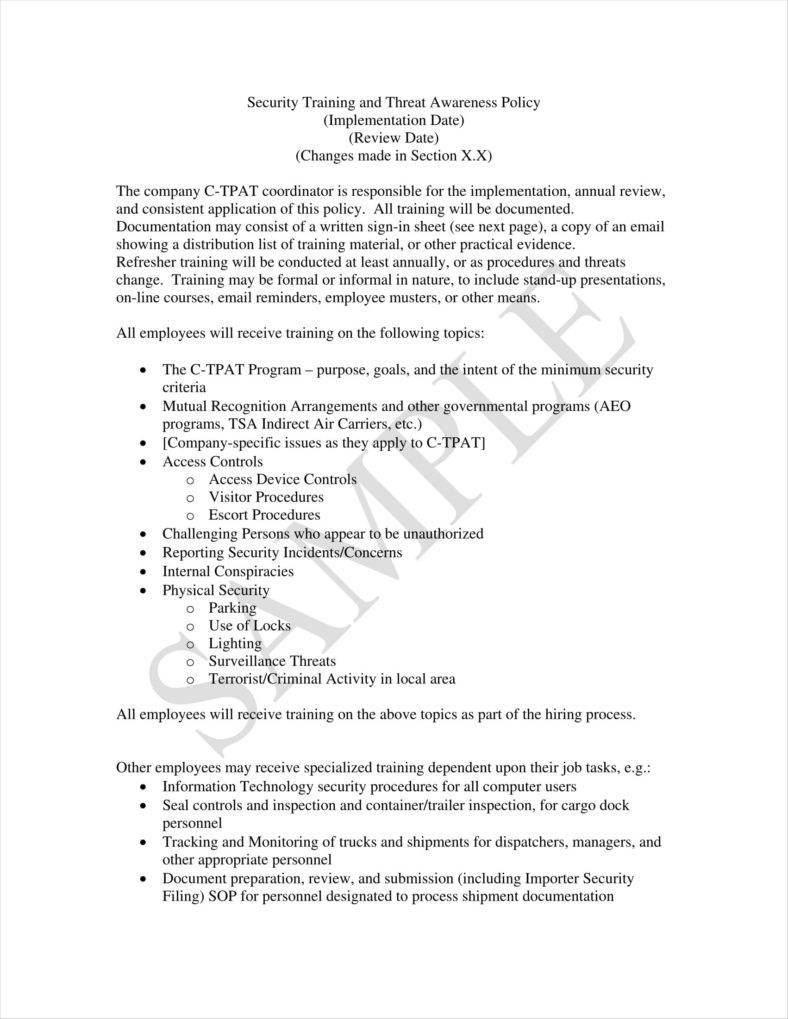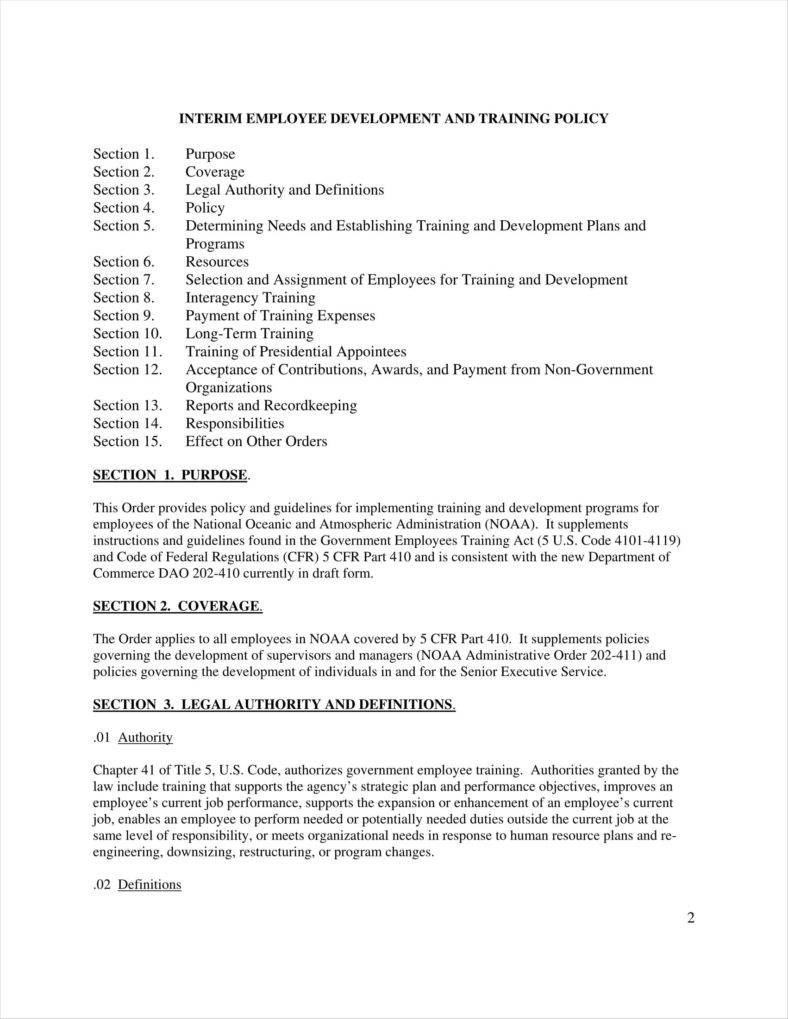9+ Training Policy Examples to Download
Employee training programs are seen by almost every prospective employee as one of the perks they look forward to when they get hired. There are employees who are not simply after the pay but rather prioritize individual development, seeing the training as one of the best ways they can learn and grow.

Employers should not just provide training to their employees just for the sake of having one but to ensure that the employees get what they deserve. Employers should also keep in mind that it is not the money that the business earns is the most important thing because the truth is, it is the people who make the business operational on a daily basis. You may also see policy proposal examples & samples.
In order to ensure this, employers must have a training policy. In this article, we have provided ten training policy templates you can use for your own training program.
Supervisor Training Policy Template Example
Coast Guard Training Policy Template Example
University Lab Training Policy Template Example
Policy and Procedure Manual Example
Law Enforcement Training Policy Template Example
Important Uses of Training Policy
Knowing the uses of training policy will help you make the most out of this policy.
1. Educate staff
The most necessary function of every training policy is to make sure that your staff are well-informed of their tasks and responsibilities at work. Through the use of a training policy, it will be ensured that your employees are given the necessary education that will help them in conforming how your business operates. Training policies would also you give you the framework of how you are going to provide necessary information to your employees and most especially the fact that it can help in making your employees knowledgeable of their tasks. You may also like examples of insurance policy.
You don’t have to worry anymore since training policies make things easier for you especially in disseminating information of about just anything an everything every employee has to do.. You may also check out customer service policy examples.
2. Creates a system for staff/other employees
The contents of your training policy can also serve as your guide. It gives you a comprehensive and manageable system that can help you in managing the task of training your employees. Additionally, this makes your tasks easier because you already now have a guide on how you should be training your employees as well as the appropriate time and circumstance to when training should be given. You may also see examples of it policies and procedures.
IT Security Training Policy Template Example
Faculty Training Policy Template Example
New Security Training Policy Template Example
Tips in Creating a Training Policy
If it is your first time creating a business training policy, it is encouraged that you take a look at these tips. Read on.
1. Find a template fit for your organization
Not all training policy templates available online are appropriate for your business organization. Make sure you look for a training policy template that can suit your business organization’s needs and particular requirements. You are lucky enough to come across this article because we have provided a variety of training template examples to choose from that is perfect for any kind of business organization.
2. Make sure your policies are organized
Training policies, like any other policies, have a lot of content. And with that, there is a tendency that you would get overwhelmed which would result in a jumbled and disorganized content. Make sure you avoid this and ensure that you check and edit the contents of your training policy before having it printed for dissemination. You may also like security policy examples.
A disorganized policy would only mean that your business organization is equally disorganized. With that dilemma, you should make sure that you give extra time for your policies to be orderly. It is suggested that you include a table of contents which will be easier for your colleagues and management team to follow. You may also check out how to create a theft policy.
3. Include the common elements of policies
For you to conduct trainings effectively, you must also create an equally effective training policy. To do so, you must ensure that you have included all of the vital elements that every training policy must have. You would then have to include sections like Definition of Terms, Legal Justifications, and other necessary parts in order to support what is being stated in your policies. You may also see employee email policy examples.
Having all the vital elements of in your training policy would ensure that all the justfications and support your policy needs and this is what makes your training policy to become effective. Keep in mind that your training policy is also an important and legal document your business organization should have. Any missed out part can possibly put you in a difficult situation. You might be interested in leave policy examples.
4. Update the training policy as needed
You do not have to be reminded again of the fact that the only constant thing in this world is change. That is why you should always update and edit the contents of your policy to ensure your training policies can adapt to constant external changes in the business environment. You may also see privacy policy examples.
Take for example a current training policy containing old and traditional methods of training. You should then analyze what needs to go and what needs to be added as a replacement. Look for new but effective training methods that can make your staff training more effective.
Interim Employee Training Policy Example
Example of Police Training Policy Template
Benefits of Effective Training Policies
Should you have a different perspective towards training policies, here are some of the benefits of training policies that can surely make you think twice and finally start creating and updating training policies for your business.
1. Enhanced individual performance of employees
Training policies ensures that you, as the employer, would provide quality trainings to your employees. If so, it would result to an enhanced individual performance of your employees. If you would continually give them necessary quality training, this would mean that they will continually improve their performance at work and would result to increased productivity. You may also check out leave policy examples.
2. Happy, satisfied employees = Increased productivity, high quality products
Once employees would acquire the necessary training for work, they become happy and satisfied employees. And what does a happy and satisified employee mean? It means there is an increase in productivity as well as an increase in producing high-quality products and services. You may also like best human resource policies and practices.
Effective training has this magic that when provided to employees. Since effective quality trainings are mostly fun and engaging, employees tend to perform better since their mental as well as emotional health were given high regard, thus positively affecting their overall work performance. You may also like email policy examples.
We hope that with the help of this article, you can create or update your training policies with an effective and relevant content.




